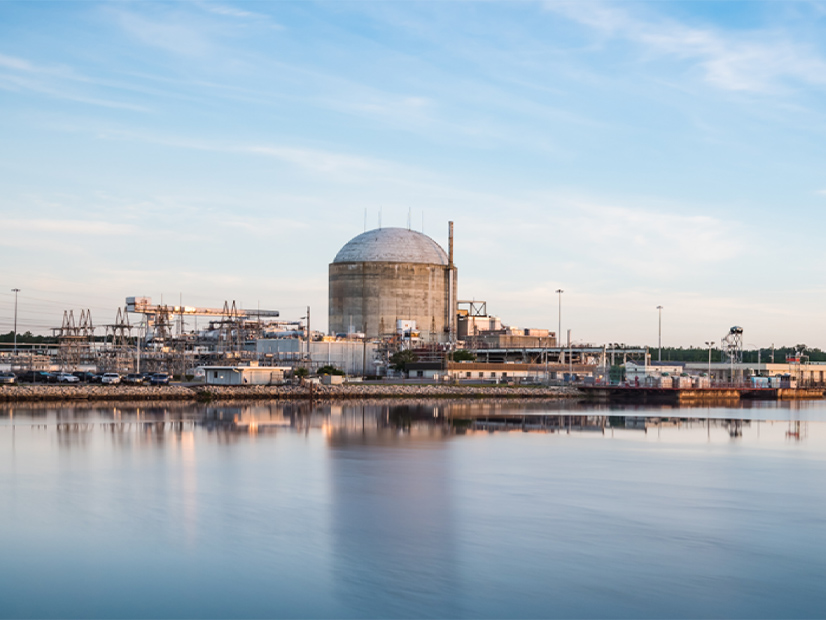
Duke Energy (NYSE:DUK) sees the U.S. clean energy transition — and clean energy tax credits from the Inflation Reduction Act — as providing growth and profit drivers for its regulated utility business, even as the company moves ahead with the sale of the 3.5-GW portfolio of its commercial renewable energy business.
Speaking during the company’s third-quarter earnings call Friday, CEO Lynn Good reported that Duke’s board had authorized the sale of the utility’s commercial and distributed renewable business. The sale will allow the company to focus on its “core” regulated electric and gas utilities, she said.
“We have indications of interest — robust indications of interest — from credible counterparties and have a high degree of confidence we will transact on this business,” Good said. A “definitive” announcement could come in the first quarter of 2023, with the sale closing “as early as mid-year,” she said.
The commercial portfolio includes 1.53 GW of solar, 1.96 GW of onshore wind and 20 MW of battery story, according to company figures.
 Duke Energy CEO Lynn Good | Duke Energy
Duke Energy CEO Lynn Good | Duke EnergyAs previously announced during Duke’s second-quarter earnings call, the proceeds from the sale will be used to pay down the utility’s debt “and allow us to fund our clean energy transition,” Good said. (See Duke Considering Sale of 3.5-GW Portfolio.)
The IRA’s production and investment tax credits will also act as a counterweight to the law’s 15% minimum corporate tax rate, which, Good said, is not expected “to have a material impact on our cash flows.” According to utility estimates, Duke could be eligible for “several hundred million dollars” per year from the IRA’s nuclear production tax credits, beginning in 2024.
Producing about half of the utility’s electricity in the Carolinas, Duke’s nuclear fleet includes 11 units totaling 10.7 GW of capacity, all located at six sites in the two states, according to the company’s website.
The utility is also estimating that the solar production tax credit will be worth about $60 million per year given the 13 to 17 GW that it could be putting on its system over the next decade. Potential investments in energy storage, estimated at $2.5 billion to $4.5 billion, would be eligible for the 30% investment tax credit for standalone storage, according to utility figures presented during the call.
Besides providing hefty tax write-offs, Good said the tax credits would be “returned to our customers, lowering our overall cost of service and providing for a more affordable energy transition.”
Duke is also capitalizing on the growth of electricity demand from new clean technology manufacturing across its service territory. Good pointed to recent announcements, such as the multibillion-dollar semiconductor plant Wolfspeed is building in North Carolina, and BMW’s expansion into electric vehicles and EV batteries in South Carolina.
Inflation, Supply Chains
With such positive business indicators, including ongoing population increases in its service territories, Good said the utility is projecting an earnings growth rate of 5 to 7% from 2023 to 2027.
The company reported net income of $1.356 billion ($1.78/share) for the quarter, compared to $1.435 billion ($1.88/share) for the same period last year.
Good acknowledged that Duke, like other businesses across the country, is facing headwinds in terms of both inflation and supply chain constraints. To counter inflation, the company has upped its cost-cutting efforts from $200 million to $300 million, Good said.
Responding to analysts’ questions, she said the cuts will come from digitalization initiatives that will “streamline our governance processes and reporting processes.” Duke is also “looking at supply chain and … other things that we could do to potentially move [costs] out of [20]23,” she said.
At the same time, the utility is countering supply chain constraints via multiyear contracts with key vendors. “We have confidence around supply into [2026] and beyond, with options to continue. We’re putting similar arrangements in place for battery storage,” Good said.
Duke’s long-term plan for the energy transition calls for $145 billion in capital investments over the next 10 years, with $75 billion earmarked for grid investments, $40 billion for “regulated zero-carbon generation” and $5 billion for “hydrogen capable” natural gas generation.
Carbon Plan Update
But Duke’s regulatory landscape, particularly in North Carolina, is still uncertain as the utility works through its compliance with H.B. 951, passed in 2021, which requires the Utilities Commission to approve a plan that will cut the state’s carbon emissions 70% by 2030. The commission asked Duke to draft the plan, which under the law must be approved by the end of the year.
Submitted in May, Duke’s draft plan includes the closure of 4.9 GW of coal and the addition of 5.4 GW of solar, but also calls for 3.5 GW of new natural gas generation. The plan also includes alternative pathways to the 70% reduction that would take two to four years longer. (See Duke Files Carbon-reduction Plan for North Carolina Utilities.)
Environmental and clean energy groups and state Attorney General Josh Stein have roundly criticized Duke’s plan and submitted alternatives of their own. But following recent series of public hearings, Duke filed a proposed order for the NCUC to approve its plan, and Good remains confident.
“This process is something that looks reasonable and somewhat predictable to us,” she said Friday. “The solar industry is interested in more solar; the industrials are interested in low prices. Low-income [organizations] are interested in the impact to low-income [customers]. The attorney general and the environmental community want us to go as fast as we can to reduce carbon [emissions].”
Good said that the comments and testimony from such stakeholders provide “fertile ground for the commission to make decisions” and defended the company’s approach.
“In the near term, it’s all about solar and battery [storage], and we have time on the long term to make decisions about some of the more difficult [technologies]: pumped storage; [small modular nuclear reactors]; offshore wind. So, we think there is strength to our recommendation to use the next couple of years to look at development on those key technologies so that we’re prepared by the middle of the decade to make the decisions about where to go.”
In particular, Good said, the company is in “evaluation mode” on offshore wind.
“It’s a renewable resource, but … we also recognize it’s expensive. It has transmission requirements, especially here in the Carolinas where you’ve got to get the power to the load centers that are further west than the coast,” she said. “The approach we’re taking is one of studying and learning more and also allowing the commission and stakeholders and the communities that could be impacted by both offshore and onshore transmission to be involved.
“We will not move first, and we will not move outside of the regulated business,” Good said. “The risk [versus] reward for investors and customers has to be appropriate for us to move forward.”


